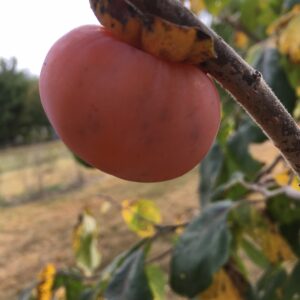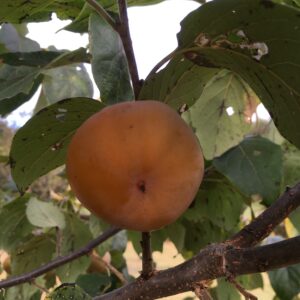Persimmons
Variety
Persimmons boast a vibrant orange hue that brightens up any fruit bowl or dish.
Sweet
With their sweet and juicy flesh, persimmons make a delightful addition to desserts or snacks.
Autumnal
The arrival of persimmons heralds the arrival of autumn, bringing warmth and richness to seasonal recipes.
Versatile
Persimmons are versatile fruits that can be enjoyed fresh, dried, cooked, or incorporated into a variety of dishes, from salads to baked goods.
FAQ
-
What does American persimmon taste like?
- The flavor is a delightful mix of rich sweetness and subtle complexity, depending on its ripeness. Its primary flavor is intensely sweet, with a syrupy, almost honey-like quality with notes of apricot, mango or plum. It also contains a slight earthy or nutty flavor that helps to balance out the sweetness, giving the flavor an added depth. The flesh is smooth and soft.
- NOTE: Eating persimmon underripe can be a rather unpleasant experience as high levels of tannins in unripe fruit can cause a sharp, drying sensation in the mouth. The best way to counter the astringency of an unripe persimmon is to eat a ripe one.
-
How do you eat an American persimmon?
- American persimmons are typically eaten out-of-hand when ripe. The best way to ensure they will have little to no astringency is to wait for the fruits to fall to the ground. The fruits will have 6-8 small, smooth, brown seeds that are not eaten (though they were once used as a coffee replacement during the Civil War). American persimmon has a long history of uses which include being made into pie, bread, jam, compote, syrup, vinegar, dried fruit leather, pudding, ice cream and beer.
-
Where can I find American persimmon?
-
The native range of the American persimmon spans much of the eastern United States. It primarily grows in regions that extend from the southeastern U.S. up through the Midwest and thrives in a variety of habitats, including floodplains, forests, and woodland edges, preferring well-drained soils and a warm, temperate climate. Much like the pawpaw, it is highly uncommon to find the fresh fruit for sale in supermarket or farmer’s markets due to its highly perishable nature; The most likely way to eat the fruit is by harvesting it from your own tree.
-
Growing Tips for Success
Persimmons Grow Great Here!

%





